
San Jose: The Heartbeat of Costa Rica
Discover San Jose, Costa Rica: A captivating blend of culture, history, and natural beauty at the heart of Central America.
San Jose, the vibrant capital of Costa Rica, is a city that pulses with life and culture. Nestled in the Central Valley, surrounded by lush mountains and coffee plantations, it offers a unique blend of traditional charm and modern sophistication. Visitors can explore an array of museums, theaters, and historic buildings that reflect the rich history and artistic heritage of the country. The city's streets are alive with colorful markets, where you can find everything from fresh produce to handcrafted souvenirs. Stroll through the bustling Mercado Central to sample local delicacies or visit the artisan stalls at the Mercado Nacional de Artesanías for unique gifts. San Jose is also known for its vibrant nightlife, with numerous bars, clubs, and restaurants offering a taste of the local scene. Nature lovers will appreciate the city's proximity to stunning natural attractions. Just a short drive away, you can explore the lush rainforests, volcanic landscapes, and beautiful beaches that Costa Rica is famous for. Whether you're looking to immerse yourself in culture, enjoy the local cuisine, or embark on outdoor adventures, San Jose provides an unforgettable starting point for your Costa Rican journey.
Local tips in San Jose
- Visit the National Theatre for a glimpse of Costa Rican architecture and performing arts.
- Take a guided tour of the Pre-Columbian Gold Museum to learn about the country's ancient cultures.
- Try the local coffee at one of the many cafes in Barrio Escalante, a trendy neighborhood.
- Use public transportation or taxis to navigate the city, as parking can be difficult to find.
- Wear comfortable walking shoes, as the city’s streets can be uneven and hilly.
- Carry a rain jacket or umbrella, especially during the rainy season from May to November.
Neighbourhoods in San Jose
San Jose: The Heartbeat of Costa Rica
San Jose, the vibrant capital of Costa Rica, is a city that pulses with life and culture. Nestled in the Central Valley, surrounded by lush mountains and coffee plantations, it offers a unique blend of traditional charm and modern sophistication. Visitors can explore an array of museums, theaters, and historic buildings that reflect the rich history and artistic heritage of the country. The city's streets are alive with colorful markets, where you can find everything from fresh produce to handcrafted souvenirs. Stroll through the bustling Mercado Central to sample local delicacies or visit the artisan stalls at the Mercado Nacional de Artesanías for unique gifts. San Jose is also known for its vibrant nightlife, with numerous bars, clubs, and restaurants offering a taste of the local scene. Nature lovers will appreciate the city's proximity to stunning natural attractions. Just a short drive away, you can explore the lush rainforests, volcanic landscapes, and beautiful beaches that Costa Rica is famous for. Whether you're looking to immerse yourself in culture, enjoy the local cuisine, or embark on outdoor adventures, San Jose provides an unforgettable starting point for your Costa Rican journey.
When is the best time to go to San Jose?
Iconic landmarks you can’t miss
Parque Metropolitano La Sabana
Explore the lush beauty of Parque Metropolitano La Sabana, a premier urban park in San José, perfect for relaxation, recreation, and cultural experiences.

Parque Central de San José
Explore the vibrant heart of San José at Parque Central, a lush park filled with culture, history, and community spirit.

Plaza de la Cultura
Discover Plaza de la Cultura in San José, a vibrant park that showcases Costa Rica's culture, history, and artistic beauty in a lively urban setting.

National Museum of Costa Rica
Uncover the rich heritage of Costa Rica at the National Museum, where history, culture, and nature intertwine in stunning exhibits.

La Paz Waterfall
Experience the breathtaking beauty of La Paz Waterfall Gardens, where nature, wildlife, and stunning waterfalls create a magical escape in Costa Rica.

National Theater of Costa Rica
Discover the exquisite charm and cultural richness of the National Theater of Costa Rica, a historical landmark and performing arts venue in San José.

Parque Nacional
Explore the serene Parque Nacional in San José, a lush urban oasis filled with rich biodiversity, sculptures, and scenic walking paths.

Importadora Monge
Discover the ultimate electronics shopping experience at Importadora Monge, a vibrant hub in San José's heart, blending tech and Costa Rican culture.

Museo del Jade
Explore the stunning Museo del Jade in San José, where ancient pre-Columbian culture comes to life through remarkable jade artifacts and immersive exhibits.

Ruins of Cartago
Explore the serene and captivating Ruins of Cartago, a historical gem in Costa Rica, perfect for history lovers and cultural explorers.

Ruinas de Ujarrás
Explore the historic Ruinas de Ujarrás, a stunning site in Cartago Province, Costa Rica, where history and nature intertwine in a breathtaking landscape.

Pre-Columbian Gold Museum
Discover the rich heritage of Costa Rica at the Pre-Columbian Gold Museum, home to exquisite artifacts from indigenous cultures.

Metropolitan Cathedral of San José
Discover the architectural splendor and rich history of the Metropolitan Cathedral of San José, a must-see landmark in Costa Rica's vibrant capital.

Hispanity Fountain
Discover the beauty and cultural significance of the Hispanity Fountain, a historical gem in San José, Costa Rica, surrounded by vibrant gardens.

Museum of Costa Rican Art
Explore the Museum of Costa Rican Art, a cultural treasure in San José showcasing the vibrant and diverse artistic heritage of Costa Rica.

Unmissable attractions to see
San José Central Market
Discover the heart of San José at the Central Market, a lively destination where culture, cuisine, and community converge.

Parque de Diversiones
Experience the joy and excitement of Parque de Diversiones, San José's premier amusement park for unforgettable family fun and thrilling adventures.

Parque Metropolitano La Sabana
Immerse yourself in the vibrant greenery of Parque Metropolitano La Sabana, San José's premier park for relaxation, recreation, and cultural exploration.

Parque Central de San José
Explore the vibrant Parque Central de San José, a lush oasis in Costa Rica's capital, full of culture, history, and local charm.

Basílica de Nuestra Señora de los Ángeles - Basilica of Our Lady of the Angels
Discover the stunning Basilica of Our Lady of the Angels in Cartago, a sacred site blending rich history, breathtaking architecture, and vibrant local traditions.

Plaza de la Cultura
Experience the vibrant heart of San José at Plaza de la Cultura, where culture, history, and local life blend seamlessly for an unforgettable visit.

National Stadium Of Costa Rica
Experience the vibrant culture and thrilling events at the National Stadium of Costa Rica, a premier sports venue in San José's La Sabana.

La Paz Waterfall Gardens Nature Park
Immerse yourself in the stunning beauty of La Paz Waterfall Gardens Nature Park, a tropical paradise of waterfalls, wildlife, and lush gardens in Costa Rica.

National Museum of Costa Rica
Explore the vibrant history and culture of Costa Rica at the National Museum, a captivating gem in San José showcasing pre-Columbian artifacts and more.

National Museum of Costa Rica
Discover Costa Rica's vibrant history and rich biodiversity at the National Museum, a cultural gem in the heart of San José.

Children's Museum
Discover a world of fun and learning at the Children's Museum in San José, where every exhibit invites exploration and creativity for kids of all ages.

Ricardo Saprissa Aymá Stadium
Experience the vibrant spirit of Costa Rican football at Ricardo Saprissa Aymá Stadium, a cultural landmark in San José Province.

National Theater of Costa Rica
Discover the rich cultural heritage of Costa Rica at the National Theater, a stunning neoclassical landmark in San José, showcasing the finest in performing arts.

Jardín Botánico Lankester
Explore the lush beauty of Jardín Botánico Lankester, a botanical paradise in Cartago, Costa Rica, showcasing thousands of unique plant species.

Rescate Wildlife Rescue Center
Discover the Rescate Wildlife Rescue Center in Alajuela, Costa Rica, a sanctuary dedicated to animal rehabilitation and conservation education.

Essential places to dine
La Esquina de Buenos Aires
Experience authentic Argentinian cuisine at La Esquina de Buenos Aires in San José - where every meal is a celebration of flavor.

Restaurante Nuestra Tierra
Experience the vibrant flavors of Costa Rica at Restaurante Nuestra Tierra - a culinary delight in San José's heart.

Tin Jo Asian Restaurant
Discover exquisite Pan-Asian cuisine at Tin Jo Asian Restaurant in San José – where culinary artistry meets authentic flavors.

Jardín de Lolita
Experience exquisite dining at Jardín de Lolita in San José’s Barrio Escalante - where local flavors meet innovative cuisine.

Furca
Discover culinary excellence at Furca in San José – where local flavors meet international flair in an inviting atmosphere.

La Criollita
Discover authentic Costa Rican flavors at La Criollita in San José – where tradition meets deliciousness in every bite.

La Casona Típica
Savor the essence of Costa Rica at La Casona Típica – your destination for authentic local cuisine in San José.

Sapore Trattoria San José
Experience authentic Italian cuisine at Sapore Trattoria in San José—where every dish is crafted with passion and tradition.

Café Rojo
Discover Café Rojo in San José: where exquisite brunch meets creative cocktails in a vibrant atmosphere.

Tenedor Argentino
Experience authentic Argentinian cuisine in San José at Tenedor Argentino – where every dish tells a story.

Restaurante Silvestre
Experience the essence of Costa Rican cuisine at Restaurante Silvestre, where fresh local ingredients meet innovative culinary artistry.

Tierra Gaucha Parrilla Argentina
Experience authentic Argentinian cuisine at Tierra Gaucha Parrilla - where every bite transports you to the heart of South America.

Árbol de Seda
Experience the vibrant flavors of vegetarian cuisine at Árbol de Seda in San José's Barrio Escalante – where every dish tells a story.

Café Mundo
Experience exquisite flavors at Café Mundo in San José - where local meets global cuisine in a vibrant setting.

Restaurante El Patio Del Balmoral
Experience authentic Costa Rican cuisine at Restaurante El Patio Del Balmoral in San José – where local flavors meet warm hospitality.
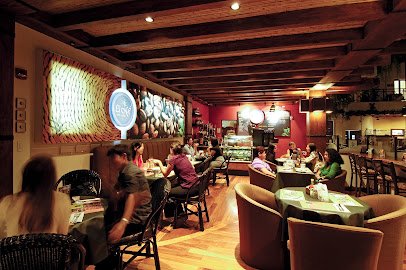
Markets, malls and hidden boutiques
Multiplaza Escazú
Discover the ultimate shopping experience at Multiplaza Escazú, where luxury brands meet local charm in a stunning setting.

Multiplaza Curridabat
Explore Multiplaza Curridabat for a unique shopping experience in Costa Rica, featuring international brands, fine dining, and local culture.

Avenida Escazu
Experience the vibrant shopping and dining scene at Avenida Escazu, the premier destination in San Rafael de Escazú, Costa Rica.
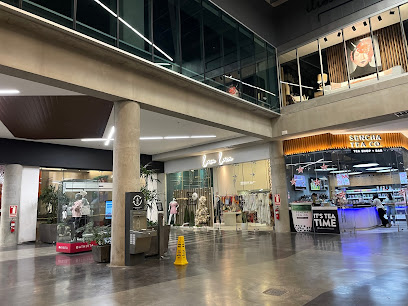
Municipal Crafts Market
Discover authentic Costa Rican craftsmanship at the Municipal Crafts Market, where vibrant culture meets unique artisanal goods.

Almacén Jerusalem de Costa Rica
Discover the vibrant styles of Costa Rican fashion at Almacén Jerusalem in San José, a must-visit clothing store for unique finds and local flair.

Offer Shop
Explore the vibrant culture of Costa Rica through unique finds at Offer Shop, a thrift store offering treasures and bargains in Desamparados.

OFFER STORE
Explore the vibrant OFFER STORE in San Rafael de Escazú for unique thrift finds and sustainable shopping experiences.

Pura Vida Souvenirs
Discover the essence of Costa Rica at Pura Vida Souvenirs, your go-to spot for unique gifts, local crafts, and vibrant t-shirts in San José.

Chinese Center Articles
Explore the Chinese Center Articles in San José for unique gifts, cultural artifacts, and souvenirs celebrating Chinese heritage.

Multicentro San José
Explore the vibrant Multicentro San José, a premier shopping destination offering diverse shops, delicious dining, and entertainment in the heart of Costa Rica.

Holalola Gift Shop
Discover Holalola Gift Shop in San José, where unique Costa Rican souvenirs and local crafts come together to create a memorable shopping experience.

Artesanias y Souvenirs diduGO
Explore the vibrant world of Costa Rican handicrafts at Artesanias y Souvenirs diduGO - a must-visit craft store in San José.
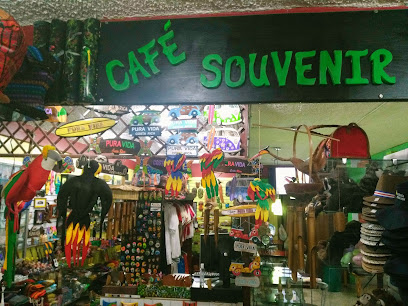
Tienda Ropa Americana
Discover unique American-style clothing at Tienda Ropa Americana in San José, Costa Rica, blending fashion and local culture seamlessly.

Tienda Eñe
Explore Tienda Eñe: Your gateway to unique local fashion and handcrafted treasures in San José, Costa Rica.
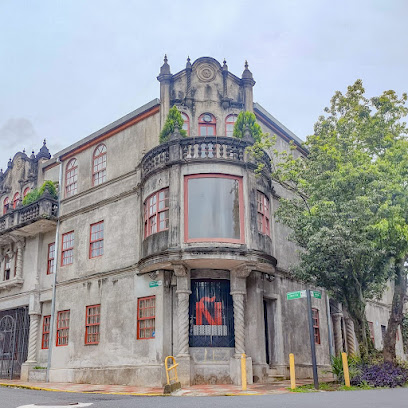
Britt Shop
Explore the Britt Shop in San José for unique gifts, artisanal chocolates, and a taste of Costa Rican culture, all in one vibrant location.

Essential bars & hidden hideouts
Antik Restaurant + Bar
Discover the vibrant nightlife at Antik Restaurant + Bar in San José, where culinary delights meet energetic dance floors for an unforgettable experience.

Craic Irish Pub
Discover the heart of Ireland in San José at Craic Irish Pub, where authentic cuisine and a lively atmosphere await you.

Rafa's Bar
Experience the vibrant nightlife at Rafa's Bar in El Carmen, San José - where locals and tourists unite over delightful drinks and lively atmosphere.

Chubbs Bar
Experience the vibrant nightlife at Chubbs Bar in San José, Costa Rica, where drinks flow and friendships blossom.

Hoplers
Discover the vibrant flavors of Costa Rica at Hoplers, a top-notch grill restaurant in San José, perfect for food enthusiasts and casual diners alike.

Central Pub
Experience the vibrant nightlife of San José at Central Pub – the ultimate gathering spot for locals and tourists alike.

La Vasco
Experience the vibrant nightlife at La Vasco, a top bar in San José, Costa Rica, known for its affordable drinks and lively atmosphere.

Pub Piso 3
Discover the heart of San José's nightlife at Pub Piso 3, where vibrant culture meets delectable drinks in a lively atmosphere.

Bar La Bohemia
Discover the energetic atmosphere and local flavors at Bar La Bohemia, a beloved bar in San José's vibrant Dolorosa neighborhood.

Bar El 13
Experience the lively ambiance and local flavors at Bar El 13, the ultimate nightlife destination in San José, Costa Rica.

Star Bar
Experience the vibrant nightlife of San José at Star Bar, where great drinks and lively atmosphere create unforgettable moments.

Bar Rest. Malibu
Experience the vibrant flavors and inviting atmosphere at Bar Rest. Malibu, a premier grill and lounge in the heart of San José, Costa Rica.

D bar
Discover the ultimate cocktail experience at D Bar in San José, where innovative drinks meet a vibrant atmosphere for an unforgettable night out.
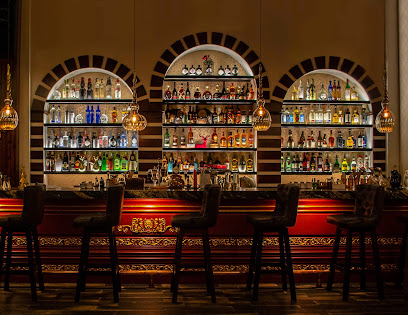
SOCHI Lounge & Bar
Discover the vibrant nightlife of San José at SOCHI Lounge & Bar, a stylish venue offering exquisite cocktails and a lively atmosphere.

Bar Cultura Cinco
Discover Bar Cultura Cinco, a lively bar in San José offering local drinks, live music, and a vibrant atmosphere perfect for unwinding.

Local Phrases
-
- HelloHola
[oh-lah] - GoodbyeAdiós
[ah-dee-ohs] - YesSí
[see] - NoNo
[noh] - Please/You're welcomePor favor/De nada
[pohr fah-vohr/deh nah-dah] - Thank youGracias
[grah-see-ahs] - Excuse me/SorryDisculpe/Perdón
[dees-kool-peh/pehr-dohn] - How are you?¿Cómo estás?
[koh-moh ehs-tahs] - Fine. And you?Bien. ¿Y tú?
[byehn. ee too] - Do you speak English?¿Hablas inglés?
[ah-blahs een-glehs] - I don't understandNo entiendo
[noh ehn-tee-ehn-doh]
- HelloHola
-
- I'd like to see the menu, pleaseMe gustaría ver el menú, por favor
[meh goos-tah-ree-ah behr ehl meh-noo, pohr fah-vohr] - I don't eat meatNo como carne
[noh koh-moh kahr-neh] - Cheers!¡Salud!
[sah-loohd] - I would like to pay, pleaseMe gustaría pagar, por favor
[meh goos-tah-ree-ah pah-gahr, pohr fah-vohr]
- I'd like to see the menu, pleaseMe gustaría ver el menú, por favor
-
- Help!¡Ayuda!
[ah-yoo-dah] - Go away!¡Vete!
[veh-teh] - Call the Police!¡Llame a la Policía!
[yah-meh ah lah poh-lee-see-ah] - Call a doctor!¡Llame a un doctor!
[yah-meh ah oon dohk-tohr] - I'm lostEstoy perdido
[ehs-toy pehr-dee-doh] - I'm illEstoy enfermo
[ehs-toy ehn-fehr-moh]
- Help!¡Ayuda!
-
- I'd like to buy...Me gustaría comprar...
[meh goos-tah-ree-ah kohm-prahr...] - I'm just lookingSolo estoy mirando
[soh-loh ehs-toy mee-rahn-doh] - How much is it?¿Cuánto cuesta?
[kwan-toh kwehs-tah] - That's too expensiveEso es muy caro
[eh-soh ehs moo-ee kah-roh] - Can you lower the price?¿Puede bajar el precio?
[pweh-deh bah-hahr ehl pree-syoh]
- I'd like to buy...Me gustaría comprar...
-
- What time is it?¿Qué hora es?
[keh oh-rah ehs] - It's one o'clockEs la una
[ehs lah oo-nah] - Half past (10)Media hora (10)
[meh-dyah oh-rah (diez)] - MorningMañana
[mah-nyah-nah] - AfternoonTarde
[tahr-deh] - EveningNoche
[noh-cheh] - YesterdayAyer
[ah-yehr] - TodayHoy
[oy] - TomorrowMañana
[mah-nyah-nah] - 1Uno
[oo-noh] - 2Dos
[dohs] - 3Tres
[trehs] - 4Cuatro
[kwah-troh] - 5Cinco
[seen-koh] - 6Seis
[sehs] - 7Siete
[see-eh-teh] - 8Ocho
[oh-choh] - 9Nueve
[nweh-veh] - 10Diez
[dyehs]
- What time is it?¿Qué hora es?
-
- Where's a/the...?¿Dónde está...?
[dohn-deh ehs-tah] - What's the address?¿Cuál es la dirección?
[kwal ehs lah dee-rehk-syohn] - Can you show me (on the map)?¿Puede mostrarme (en el mapa)?
[pweh-deh mohs-trahr-meh (ehn ehl mah-pah)] - When's the next (bus)?¿Cuándo es el próximo (autobús)?
[kwan-doh ehs ehl proh-ksee-moh (ow-toh-boos)] - A ticket (to ....)Un boleto (para ....)
[oon boh-leh-toh (pah-rah ....)]
- Where's a/the...?¿Dónde está...?
History of San Jose
-
San José, the capital of Costa Rica, was founded in 1737 by order of Cabildo de León. It was one of the last cities established in the Spanish colonial Americas. Initially a small village, it grew quickly due to its fertile lands and strategic location. The city's formal establishment is marked by the construction of its first chapel, La Boca del Monte, which was crucial for the town's early development.
-
The 19th century saw San José transform from a small village into a bustling city, largely due to the coffee trade. Coffee became Costa Rica's principal export, and San José emerged as a key economic center. The wealth generated by coffee exports led to significant urban development, including the construction of important buildings such as the National Theater.
-
On September 15, 1821, Costa Rica declared independence from Spain, along with the rest of Central America. San José played a pivotal role in the post-independence period, as it became the political and economic hub of the new nation. The city’s leaders were instrumental in shaping the early policies and governance structures of independent Costa Rica.
-
The Costa Rican Civil War of 1948 had a profound impact on San José. The conflict arose after a disputed presidential election and resulted in a 44-day war. José Figueres Ferrer led the victorious rebel forces, which resulted in significant political changes, including the abolition of the military. San José was at the heart of these historical events, with many key battles and decisions taking place in the city.
-
The latter half of the 20th century saw significant modernization and urban growth in San José. The city expanded rapidly, incorporating surrounding areas and developing new infrastructure. This period also saw the establishment of numerous cultural institutions, such as museums and theaters, which played a crucial role in shaping the vibrant cultural landscape of modern San José.
-
San José experienced a cultural renaissance in the late 20th and early 21st centuries. The city became a hub for the arts, with numerous festivals, art galleries, and theaters emerging. The National Theater, constructed in the late 19th century, continued to be a centerpiece of cultural life, hosting performances and events that drew audiences from around the world.
San Jose Essentials
-
San Jose, the capital city of Costa Rica, is most commonly accessed via Juan Santamaría International Airport (SJO), located about 20 kilometers from the city center. Direct flights are available from major cities in North America, Europe, and other parts of Latin America. From the airport, you can take a taxi, shuttle service, or rent a car to reach San Jose. Public buses also run regularly between the airport and the city.
-
San Jose offers a variety of transportation options. Taxis are plentiful and can be hailed on the street or booked via apps like Uber and DiDi. The city also has an extensive bus network that connects different neighborhoods and suburbs. For those looking to explore beyond the city, car rentals are available, though traffic can be heavy. Additionally, there are intercity buses that connect San Jose to other parts of Costa Rica.
-
The official currency in Costa Rica is the Costa Rican Colón (CRC). US dollars are widely accepted in tourist areas, but it's advisable to carry some local currency for smaller purchases. Credit cards are accepted in most hotels, restaurants, and shops, but smaller businesses may prefer cash. ATMs are widely available throughout the city, and most accept international cards.
-
While San Jose is generally safe, it's important to take standard precautions. Avoid displaying valuables and be cautious in crowded areas where pickpocketing can occur. Certain neighborhoods, such as La Carpio and Los Guidos, have higher crime rates and are best avoided by tourists. Stick to well-lit areas at night and use reputable transportation services.
-
In case of emergency, dial 911 for police, fire, and medical assistance. San Jose has several hospitals and clinics, including the renowned Hospital Clínica Bíblica and Hospital CIMA. Pharmacies are abundant and can provide over-the-counter medications. It's advisable to have travel insurance that includes medical coverage.
-
Fashion: Do dress casually but neatly. Avoid overly revealing clothing, especially when visiting religious sites. Religion: Do show respect in churches; it's customary to keep quiet and dress modestly. Public Transport: Do be patient, as buses can be crowded. Don’t eat or drink on public transport. Greetings: Do greet people with a friendly 'Hola' or 'Buenos días.' A handshake is common in formal settings. Eating & Drinking: Do try local dishes like Gallo Pinto. Don’t forget to tip, usually around 10% in restaurants.
-
To experience San Jose like a local, visit the Mercado Central for a taste of everyday life and local cuisine. Explore Barrio Amón, a historic neighborhood with colonial architecture and trendy cafes. Attend a local soccer match at the Estadio Nacional to feel the local spirit. Don't miss the National Theater and the Pre-Columbian Gold Museum, which offer deep insights into Costa Rican culture and history.
Trending Landmark in San Jose
-
Parque Metropolitano La Sabana
-
Parque Central de San José
-
Plaza de la Cultura
-
National Museum of Costa Rica
-
La Paz Waterfall
-
National Theater of Costa Rica
-
Parque Nacional
-
Importadora Monge
-
Museo del Jade
-
Ruins of Cartago
-
Ruinas de Ujarrás
-
Pre-Columbian Gold Museum
-
Metropolitan Cathedral of San José
-
Hispanity Fountain
-
Museum of Costa Rican Art
Nearby Cities to San Jose
-
Things To Do in Manuel Antonio
-
Things To Do in Jaco
-
Things To Do in La Fortuna
-
Things To Do in Monteverde
-
Things To Do in Puerto Viejo
-
Things To Do in Guanacaste
-
Things To Do in Liberia
-
Things To Do in Playa Flamingo
-
Things To Do in Tamarindo
-
Things To Do in Volcan
-
Things To Do in Bocas del Toro
-
Things To Do in Boquete
-
Things To Do in Ometepe
-
Things To Do in San Juan del Sur
-
Things To Do in David


















